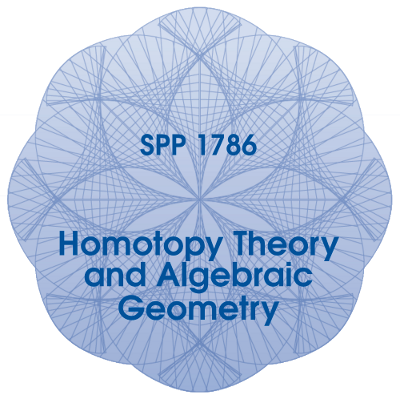♠
Simon Pepin Lehalleur: An introduction to motivic homotopy theory
Ideas and methods from algebraic topology have enriched algebraic geometry since Riemann. Following the work of Voevodsky and Morel at the end of the 1990s, one can go further and "do algebraic topology in algebraic geometry". This is the subject of motivic homotopy theory.
I will introduce the basic ideas and construct two fundamental categories: the (unstable) motivic homotopy category and the triangulated category of mixed motives. Along the way, I
will define invariants of algebraic varieties which are representable in these categories and which will be studied and generalised in the following talks: Higher Chow groups, Suslin homology, algebraic
K-theory.
|
♠
Matthias Wendt: Classification of torsors in motivic homotopy theory
In complex geometry, the well-known Oka-Grauert theorem states that the holomorphic and continuous classification of principal bundles over Stein manifolds agree. In the talk, I will present recent joint work with Aravind Asok and Marc Hoyois which establishes an analogous statement in algebraic geometry. Our result states that torsors under isotropic reductive groups over smooth affine schemes can be classified by means of motivic homotopy theory. I will explain the two main ingredients - the descent results in motivic homotopy and the homotopy invariance of principal bundles. Finally, I will also give examples how the affine representability results can be used to actually prove results about torsor classification in algebraic geometry.
|
♠
Shane Kelly: Motivic cohomology vs étale cohomology
Grothendieck's initial vision of motives was as a universal cohomology theory, containing the information present in all other Weil cohomology theories (singular cohomology, de Rham cohomology, l-adic cohomology, crystalline cohomology, …). I will explain how to construct Ivorra's realisation functor from Voevodsky's geometric motives towards the derived category of l-adic sheaves. This gives a natural context in which to understand comparisons between cycle based theories such as Suslin homology, higher Chow groups, motivic cohomology, and étale cohomology. If time permits I will briefly mention how such things are related to the Milnor conjecture.
|
♠
Kay Rülling: Suslin homology of relative curves with modulus
The talk is a report on joint work with Takao Yamazaki.
I will introduce relative Suslin homology with modulus, which in the absolute case was defined by Shuji Saito, and give some basic properties and relations to other cohomology theories. Then I will explain how to compute it in the case of a relative curve with modulus over a smooth basis. This generalizes a classical result of Suslin and Voevodsky. If time permits, I will explain the connection with the theory of motives with modulus, recently introduced by Kahn, Saito, Yamazaki.
|

